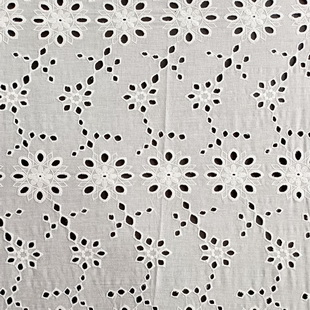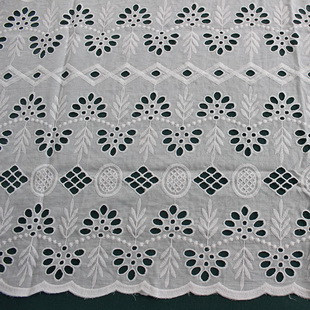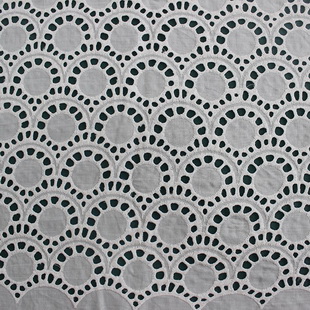- Brocade & Jacquard
- Knit Eyelet
- Rhinestone Trim
- Eyelet Lace
- Embroidered Fabric
- Lace Fabric
- Guipure Lace
- Corded Fabric
- Guipure Fabric
- Beaded Fabric
- Sequin Fabric
- Knitted Fabric
- Linen Fabric
- Taffeta, Charmeuse & Tulle
- Tweed Fabric
LATEST NEWS
CONTACT US
- ADD: NO.18 RM 1209, Le Cheng Yi Lu South, Nanhai Foshan China 528226
- TEL: +86-137-2408-5530
- FAX: Whatsapp
- E-mail: info@inspire-textile.com
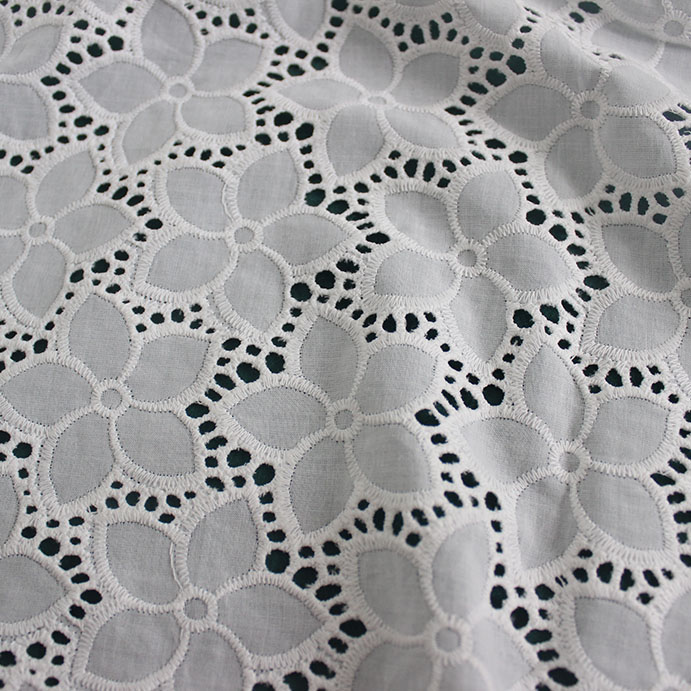


XE080 Good Quality Fancy Floral Cotton Eyelet Lace Fabric
- Product description: Lace fabric features beautiful patterns that help make a dress more beautiful, it comes in many choices to match with a dress or make a dress using it. It is breathable.
PRODUCT INTRODUCTION
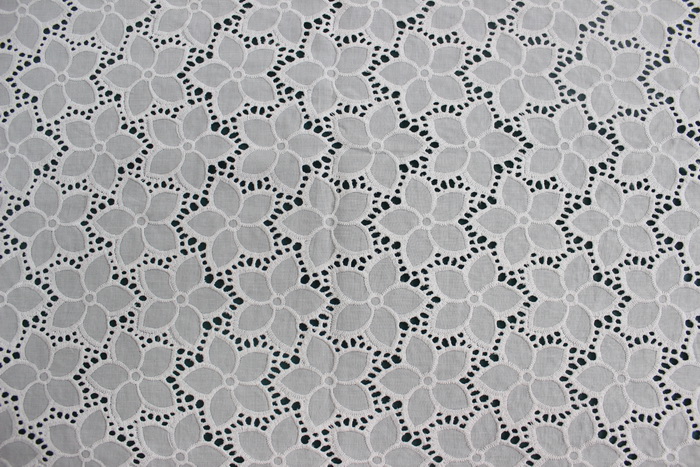
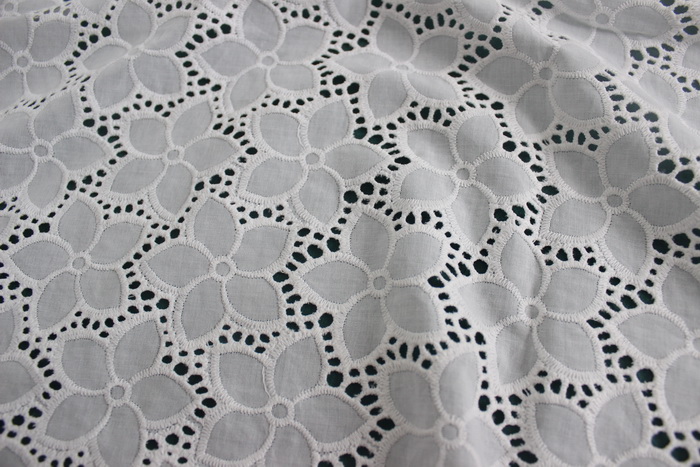
What is lace fabric?
The lace fabric is a type of fabric with an open weave and delicate design. It has been around for centuries and was originally hand-made using various types of threads, but today it is also made using machines. The lace fabric is used in a variety of applications, from clothing and accessories to home décor.
The beauty of lace fabric lies in its intricate design and texture. It is made of different types of threads, such as cotton, silk, polyester, and nylon. The threads are woven together in a variety of patterns and can be intricate or simple. The type of thread used affects the look and feel of the lace fabric.
The lace fabric is often used to make clothing items such as blouses, skirts, and dresses, as well as accessories such as scarves and veils. It is also used in home décor, such as curtains, tablecloths, and bedding. The intricacy of the lace fabric makes it a popular choice for special occasions, such as weddings and proms.
Today, there are many different types of lace fabric to choose from, each with its own unique look and feel. In this article, we’ll explore the 8 types of lace fabric and their uses.
- ●Chemical Lace
Chemical lace is created through a process that combines natural fibers, such as cotton or linen, with chemical compounds and dyes. The fibers are then treated with a chemical solution that causes them to become intertwined and form a fabric. This fabric is then dyed and treated to create the desired pattern or design. Chemical lace is available in a variety of colors, textures, and patterns and is often used to create intricate and delicate lace-like designs on garments.
- ●Embroidered Lace
Embroidered lace is a lace fabric made on the net with raised motifs outlined with beads and a cord. The motifs are outlined with silk cord giving the lace more definition. Embroidered lace is typically made of cotton or silk. This lace fabric is often used to make formalwear and other special occasion garments. It’s also used in lingerie, curtains, and home decor.
- ●Beaded Lace
Beaded lace is made from either synthetic or natural fibers like silk, cotton, linen, and more. The fabric is woven on a loom and the beads are added to the threads to create an intricate pattern. The beads are usually added in a variety of colors, sizes, and shapes to create a beautiful and unique design. It is a luxurious and intricate fabric usually used to create intricate and beautiful garments, costumes, and accessories.
- ●Floral Lace
Floral lace is a type of fabric that features an intricate pattern of flowers and leaves. While traditional floral lace fabric used to be made with wool or cotton threads, modern versions are often made with synthetic materials like nylon, rayon, and polyester. This fabric is usually lightweight and sheer, making it the perfect choice for creating delicate and romantic garments. Whether you prefer the classic look of a vintage-inspired dress or the modern appeal of a contemporary blouse, floral lace is sure to add a touch of elegance to any outfit.
- ●Corded Lace
Corded lace is a type of lace fabric that is created from a fine corded thread. The corded lace is made from a fine corded thread. This thread is usually made of silk, but other threads such as cotton, rayon, and polyester can also be used. This type of thread is very thin and delicate, making it perfect for creating intricate designs. The corded thread is then woven into a mesh-like pattern and then embroidered onto the fabric. It is a very delicate and intricate fabric that is used for a variety of items such as wedding dresses, bridal veils, and lingerie.
- ●3D Lace
The latest trend in fashion and fabric design is 3D lace. This innovative fabric is taking the fashion industry by storm, and its popularity continues to grow. 3D lace is a unique fabric that is created through a combination of 3D printing and traditional lace-making techniques. It is made up of intricate patterns that are printed onto fabric and then layered together to create a three-dimensional effect. 3D lace is being used in a wide range of fashion and apparel items, from dresses to lingerie, and even swimwear. The intricate patterns and intricate details of the fabric make it a perfect choice for creating unique and eye-catching designs.
- ●Lace Trim
In clothing, lace trim is often used to dress up hemlines, collars, and cuffs. It can also be used as a decorative element on a top or dress. Lace trim is also a popular choice for adding a touch of romance to home decor. It can be used to frame a window, line the edges of a curtain, or accentuate throw pillows.
- ●Lace Applique
Lace motifs that can be appliqued to garments are very beautiful. They have the advantage of being single items and are a cost-effective way to decorate garments. They can be made from nylon or cotton. Lace appliqués are a unique and beautiful way to add texture and interest to a project. Whether you’re looking to add a vintage touch to a quilt or embellish a dress or gown, lace appliqués can take your project to the next level.
As you can see, there are many different types of lace fabric available. Depending on your needs, you can choose the perfect type of lace fabric for your project. All of these types of lace fabric are beautiful and can be used to create stunning fashion pieces. No matter which type of lace you choose, you will be sure to create a beautiful piece that will last for years to come.
Does lace fabric has a right and wrong side?
The right side of the lace is the side that should be showing on the outside of your project. This is the side that will have the pattern or design you’re looking for, as well as the side that will be seen by others. The wrong side of lace is the inside side and it typically has a more matte look compared to the right side. The wrong side of lace usually has a duller color and lacks the same definition that is seen on the right side. To avoid confusing the sides while sewing, we recommend placing a colored sticky dot on your "right" side. Before cutting the lace into desired lengths, stick on additional dots so that all of your lace pieces have dots on the right side.
How to care for lace fabric?
If you have a lace garment in your wardrobe, you know that it requires special care. Lace is a delicate fabric that can easily be damaged, so it is important to take extra care when washing, drying, and storing it. Here are a few tips to help you care for lace correctly.
- ●Washing: Before washing, check the care label on your garment and follow the instructions. If the label says to hand wash, use a gentle detergent and cool water. Avoid wringing or twisting the lace, as this can cause damage. Instead, press the water out of the fabric and lay it flat to dry.
- ●Drying: Never put lace garments in the dryer. The heat can warp or melt the delicate fabric, so it is best to air dry them. For best results, lay the garment flat on a towel and let it air dry in a cool, dry place.
- ●Storing: The best way to store lace garments is to hang them in a dry, cool closet. If the fabric is fragile, use a padded hanger to provide extra support. For extra protection, place a cotton cloth over the garment. This will protect the lace from dust and dirt.
It is important to remember that lace garments require special care. By following these tips, you can ensure that your lace garment stays in excellent condition for years to come.



